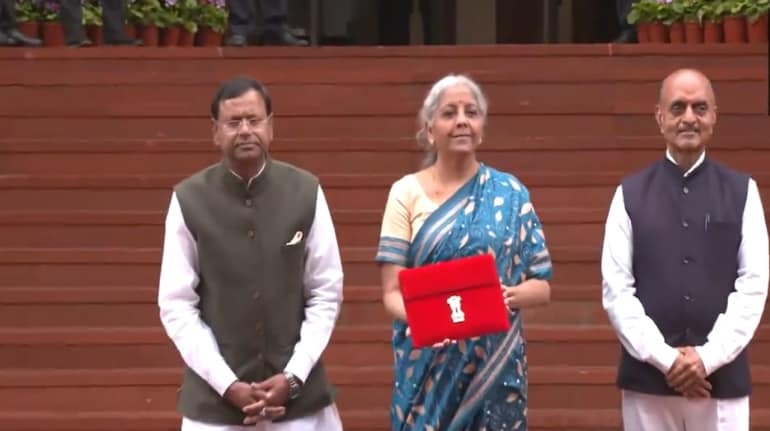The Indian stock market is expected to open in the red following weak global cues. Trends on SGX Nifty indicate a gap-down opening for the index in India with a 159-points loss.
The BSE Sensex declined 286.91 points to 59,126.36, while the Nifty50 fell 93.10 points to 17,618.20 and formed a bearish candle on the daily charts as the closing was lower than opening levels.
According to pivot charts, the key support levels for the Nifty are placed at 17,554.93, followed by 17,491.67. If the index moves up, the key resistance levels to watch out for are 17,711.83 and 17,805.46.
Stay tuned to Moneycontrol to find out what happens in the currency and equity markets today. We have collated a list of important headlines across news platforms which could impact Indian as well as international markets:
US Markets
Wall Street ended sharply lower on Thursday and the S&P 500 posted its worst month since the onset of the global health crisis, following a tumultuous month and quarter wracked by concerns over COVID-19, inflation fears and budget wrangling in Washington.
The Dow Jones Industrial Average fell 546.8 points, or 1.59%, to 33,843.92, the S&P 500 lost 51.92 points, or 1.19%, to 4,307.54 and the Nasdaq Composite dropped 63.86 points, or 0.44%, to 14,448.58.
Asian Markets
Shares in Asia-Pacific slipped in Friday morning trade following an overnight drop on Wall Street. Australian stocks led losses regionally, with the S&P/ASX 200 falling 2.23%. In Japan, the Nikkei 225 fell 1.41% while the Topix index shed 1.8%.
SGX Nifty
Trends on SGX Nifty indicate a gap-down opening for the index in India with a 159-points loss. The Nifty futures were trading at 17,442 on the Singaporean Exchange around 07:30 hours IST.
Oil steadies after report China ready to buy more
Oil futures were little changed on Thursday as reports China was prepared to buy more oil and other energy supplies to meet growing demand offset price pressure from an unexpected rise in US crude inventories and a strong dollar.
Brent futures for November delivery fell 12 cents, or 0.2%, to settle at $78.52 a barrel, while US West Texas Intermediate (WTI) crude rose 20 cents, or 0.3%, to settle at $75.03.
Centre's April-August fiscal deficit at 31% of budgeted target
The Centre's fiscal deficit for April-August came in at Rs 4.7 lakh crore, or 31 percent of the full-year budget estimate, compared with 109 percent for the same period last year, official data showed on September 30.
Finance Minister Nirmala Sitharaman had budgeted a fiscal deficit target of Rs 15.07 lakh crore, or 6.8 percent of nominal gross domestic product, for FY22. The fiscal deficit for FY21 was revised to Rs 18.49 lakh crore, or 9.5 percent of GDP, from a budget target of 7.96 lakh crore, or 3.5 percent of GDP.
Sebi extends deadline for investment advisers to conduct annual compliance audit
Markets regulator Sebi on Thursday extended the deadline for investment advisers to conduct the annual compliance audit for the financial year ended March 31. The timeline for compliance with the requirements has been extended by three months, Sebi said in a circular.
For the financial year ending March 31, 2021, the investment advisers (IA) are now required to conduct the annual compliance audit by December 31, 2021, and submit the adverse findings of the audit, if any, by January 31, 2022.
Eight core sectors' output grows 11.6% in August
Eight core industries, including coal, crude oil, and steel, posted a growth of 11.6 percent in August on a yearly basis, as per government data released on Thursday. The eight core industries -- coal, crude oil, natural gas, refinery products, fertilisers, steel, cement and electricity -- comprise 40.27 percent of the weight of items included in the Index of Industrial Production (IIP).
Foreign exchange reserves rise $34.1 billion in June quarter: RBI data
The country's foreign exchange reserves in nominal terms, including valuation effects, increased by $34.1 billion during the June quarter compared to $27.9 billion in the year-ago period, RBI data showed on Thursday.
The valuation gain, reflecting the depreciation of the US dollar against major currencies and increase in gold prices, amounted to $2.2 billion during the April-June 2021 period. In the year-ago period, the same was at $8 billion.
Japan's Sept factory activity grows at slowest pace in 7 months - PMI
Japan’s factory activity grew at the slowest rate in seven months in September as overall output and new orders shrank due to the fallout from the coronavirus pandemic, a survey showed on Friday.
The final au Jibun Bank Japan Manufacturing Purchasing Managers’ Index (PMI) in September slipped to 51.5 on a seasonally adjusted basis from 52.7 in the previous month.
FII and DII data
Foreign institutional investors (FIIs) net sold shares worth Rs 2,225.60 crore, while domestic institutional investors (DIIs) net bought shares worth Rs 97.18 crore in the Indian equity market on September 30, as per provisional data available on the NSE.
With inputs from Reuters & other agencies
Adblock test (Why?)
Top 10 things to know before the market opens - Moneycontrol.com
Read More

















